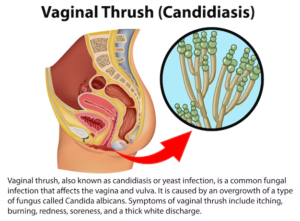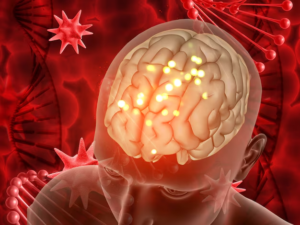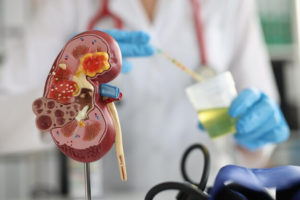Understanding Urinary Disorders in Ayurveda: A Comprehensive Guide
Understanding Urinary Disorders in Ayurveda: A Comprehensive Guide the ancient system of medicine that originated in India over 5,000 years ago, offers a holistic approach to health and wellness. It emphasizes balance in the body’s energies (doshas), proper digestion (agni), and elimination of waste (malas). Among the various health issues addressed by Ayurveda, urinary disorders are significant due to their impact on overall well-being. This blog explores urinary disorders in the context of Ayurveda, delving into their causes, symptoms, and Ayurvedic treatments.
The Ayurvedic Perspective on Urinary Health

In Ayurveda, urinary health is closely linked to the balance of doshas and the proper function of the urinary system. The urinary system, or “mutravaha srotas,” is responsible for eliminating waste and maintaining fluid balance in the body. According to Ayurveda, the doshas—Vata, Pitta, and Kapha—play a crucial role in maintaining this balance.
- Vata Dosha: Represents the elements of air and space. It governs movement and is responsible for the flow of urine. Imbalances in Vata can lead to issues like frequent urination or difficulty urinating.
- Pitta Dosha: Represents the elements of fire and water. It controls the metabolism and transformation of fluids in the body. An excess of Pitta can result in conditions such as urinary tract infections (UTIs) and burning sensations during urination.
- Kapha Dosha: Represents the elements of earth and water. It provides structure and stability. When Kapha is imbalanced, it can lead to conditions like retention of fluids and a feeling of heaviness.
Common Urinary Disorders in Ayurveda
1. Prameha (Diabetes Mellitus)
Prameha, often equated with diabetes, is a condition characterized by excessive urination and sweet-smelling urine. It is primarily caused by an imbalance of the Kapha dosha and the impaired function of the urinary system.
Symptoms:
- Frequent urination
- Excessive thirst
- Sweet-smelling urine
- Fatigue
Ayurvedic Treatment:
- Diet: Incorporate bitter, astringent, and pungent tastes in your diet. Foods like bitter melon, fenugreek, and turmeric can be beneficial.
- Herbs: Use herbs like Guduchi (Tinospora cordifolia), Bilva (Aegle marmelos), and Shilajit to support metabolic functions.
- Lifestyle: Regular exercise and maintaining a healthy weight are crucial.
2. Mutrashmari (Kidney Stones)
Mutrashmari refers to the formation of stones in the urinary tract. This condition is usually linked to an imbalance of Pitta dosha and a lack of fluid balance.
Symptoms:
- Severe pain in the lower abdomen or back
- Blood in urine
- Frequent urination
- Nausea and vomiting
Ayurvedic Treatment:
- Diet: Increase fluid intake and consume diuretic foods like cucumber and watermelon.
- Herbs: Use herbs like Chanca piedra (Phyllanthus niruri), Gokshura (Tribulus terrestris), and Punarnava (Boerhavia diffusa) to help dissolve stones and support kidney function.
- Panchakarma: Detoxification procedures like Basti (medicated enemas) can be beneficial.
3. Ashmari (Urinary Stones)
Ashmari involves stones in the bladder or urethra. It is often due to an imbalance in Vata and Kapha doshas.
Symptoms:
- Painful urination
- Difficulty starting urination
- Lower abdominal pain
Ayurvedic Treatment:
- Diet: Reduce intake of heavy, oily, and salty foods.
- Herbs: Herbs like Varuna (Crataeva nurvala) and Pashanabheda (Brydia herb) are known to support the breakdown of stones.
- Yoga: Certain yoga postures can help improve urinary function and relieve discomfort.
4. Vataja Mutradosha (Vata-Related Urinary Disorders)
These disorders are characterized by dryness, pain, and difficulty in urination, reflecting an imbalance in the Vata dosha.
Symptoms:
- Dryness in the urinary tract
- Painful and difficult urination
- Constipation
Ayurvedic Treatment:
- Diet: Consume warm, moist, and oily foods. Incorporate ghee and healthy fats into the diet.
- Herbs: Use herbs like Ashwagandha (Withania somnifera) and Shatavari (Asparagus racemosus) to balance Vata and improve hydration.
- Lifestyle: Maintain a regular routine and practice relaxation techniques.
Diagnostic Approach in Ayurveda
Ayurvedic diagnosis of urinary disorders involves a thorough examination of the doshas, dhatus (tissues), and malas (waste products). Key diagnostic tools include:
- Pulse Diagnosis (Nadi Pariksha): Assessing the pulse helps determine the imbalance in the doshas.
- Urine Analysis (Mutra Pariksha): Observing the color, odor, and consistency of urine provides insights into the underlying condition.
- Physical Examination: Evaluating the abdomen and lower back for tenderness and discomfort.
Preventive Measures and Lifestyle Recommendations
Prevention is crucial in Ayurveda, and several lifestyle practices can help maintain urinary health:
- Hydration: Drink plenty of water and herbal teas to keep the urinary system flushed and hydrated.
- Balanced Diet: Follow a diet tailored to your dosha type. Incorporate fresh fruits, vegetables, and whole grains.
- Regular Exercise: Engage in regular physical activity to support overall health and enhance fluid balance.
- Stress Management: Practice yoga, meditation, or other relaxation techniques to manage stress, which can impact urinary health.
Integrating Ayurveda with Modern Medicine
While Ayurveda offers valuable insights and treatments for urinary disorders, it is essential to integrate these practices with modern medical approaches when necessary. Consulting a healthcare professional for a comprehensive diagnosis and treatment plan is crucial, especially for severe or chronic conditions.
Conclusion
Ayurveda provides a holistic approach to understanding and managing urinary disorders by emphasizing the balance of doshas and the health of the urinary system. By adopting Ayurvedic principles and treatments, individuals can address the root causes of urinary issues and promote overall well-being. Incorporating a balanced diet, appropriate herbs, and lifestyle practices can significantly improve urinary health and quality of life.
For anyone experiencing urinary issues, exploring Ayurvedic remedies in conjunction with conventional medical advice can offer a comprehensive path to recovery and wellness.








Leave a reply